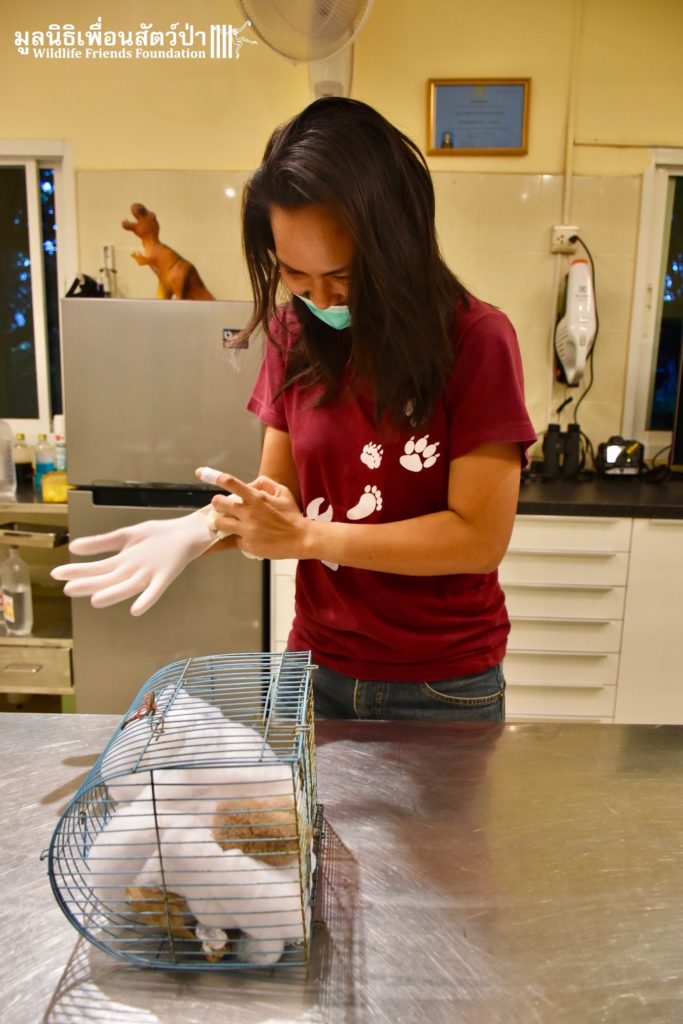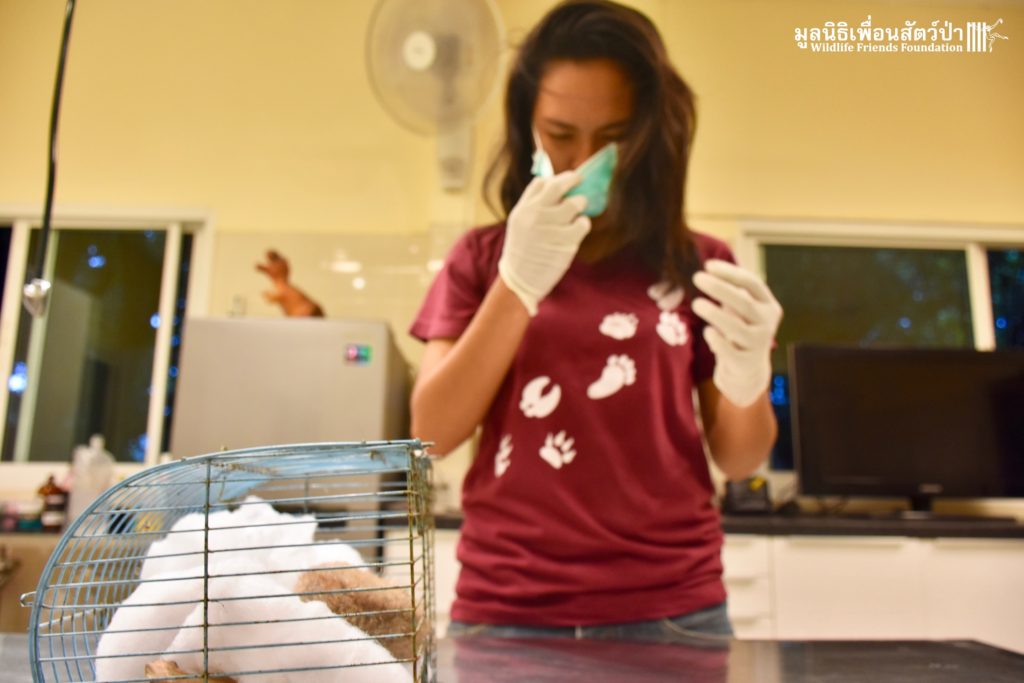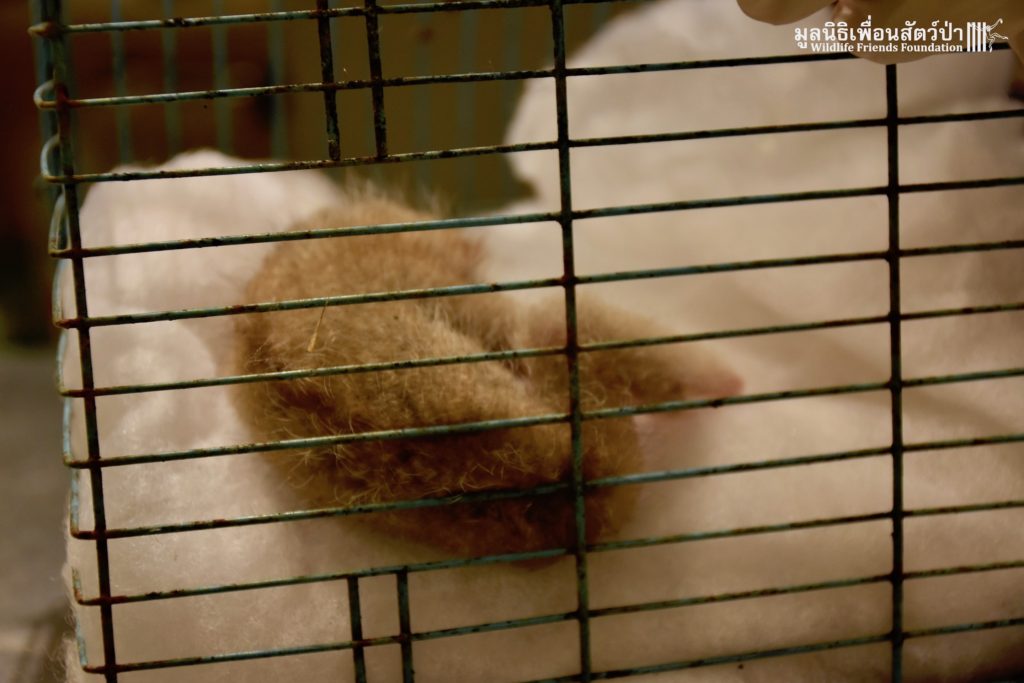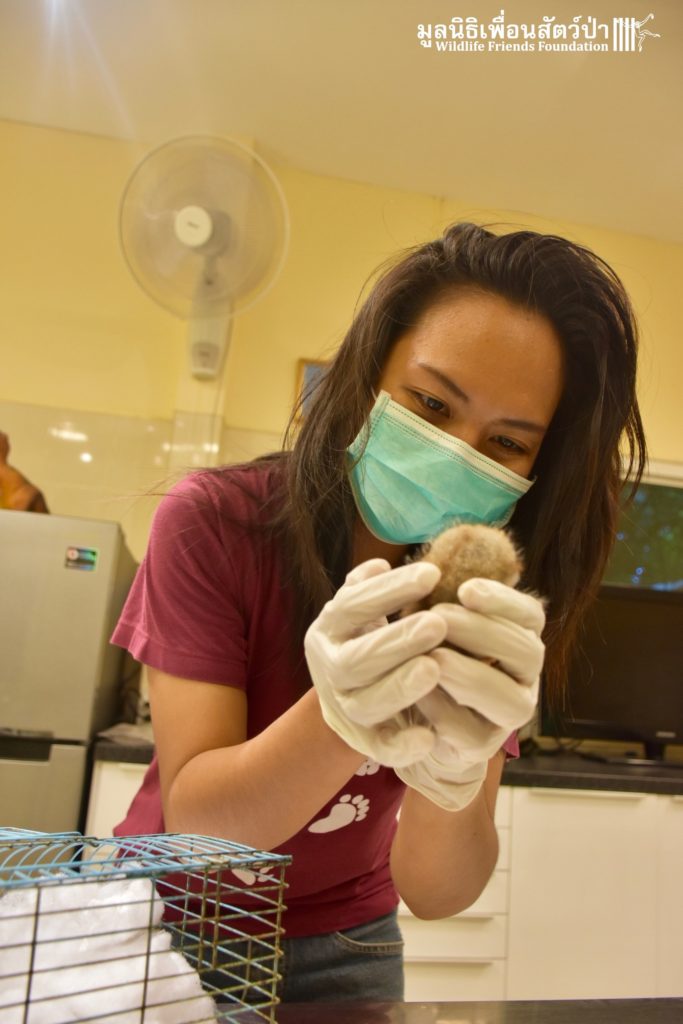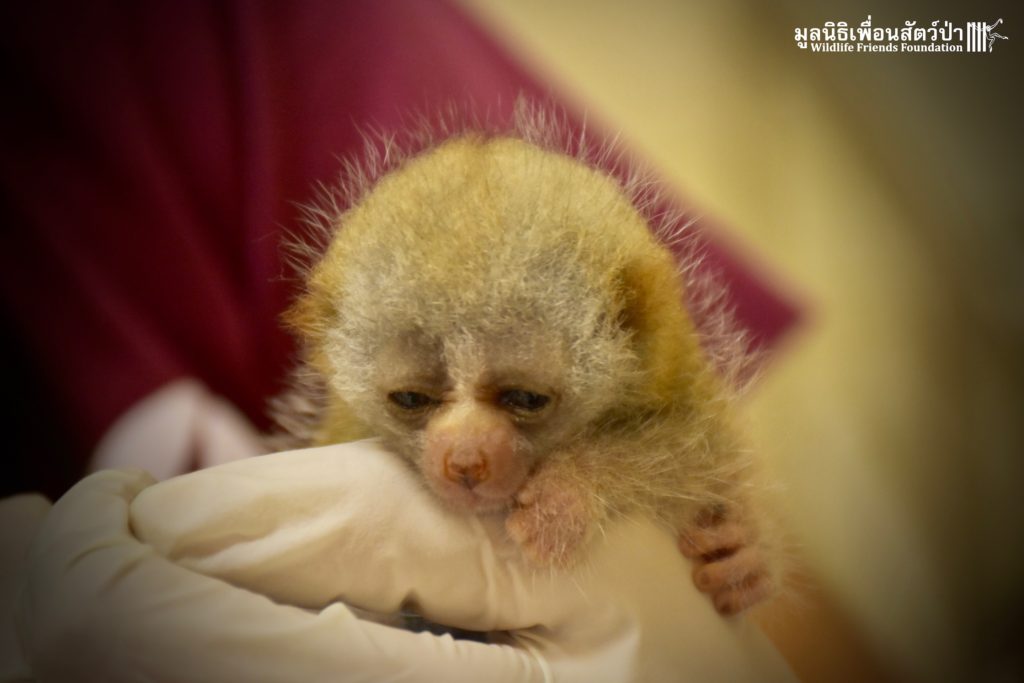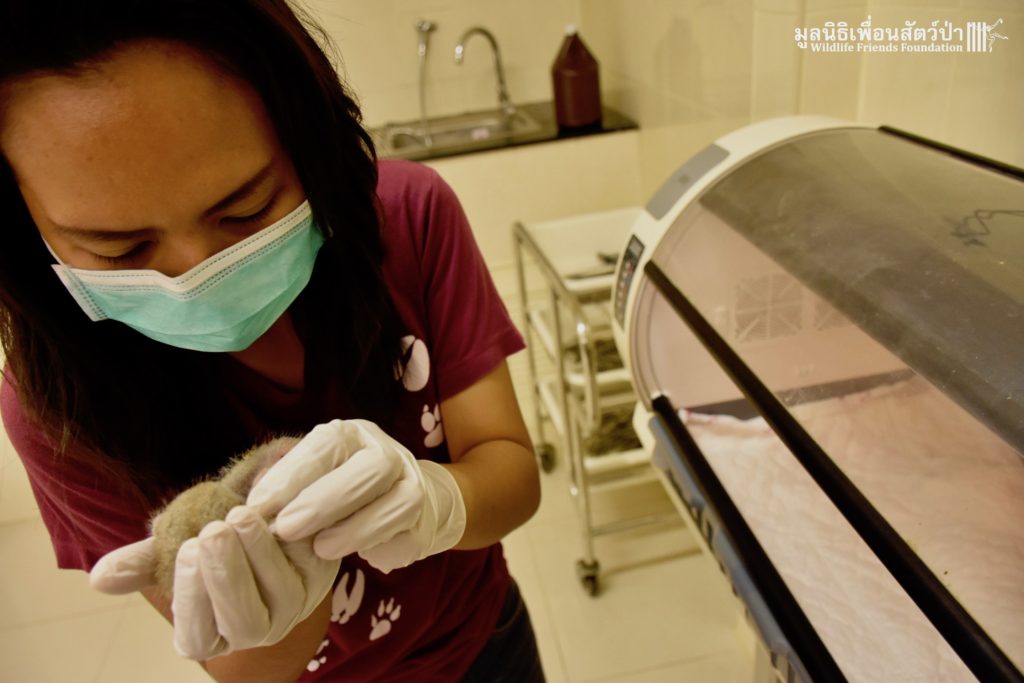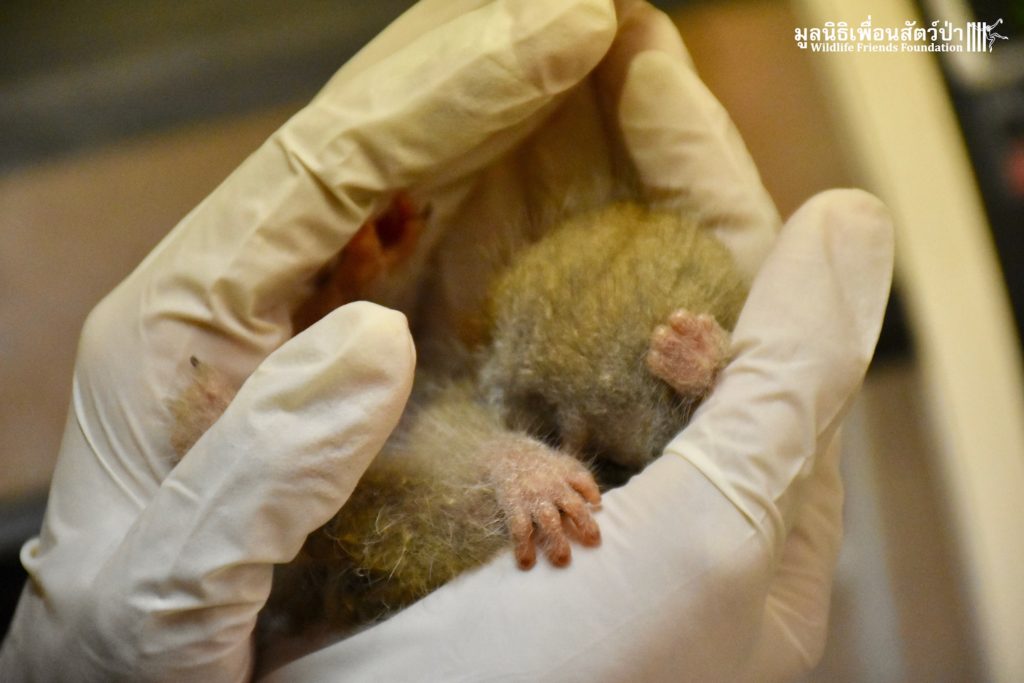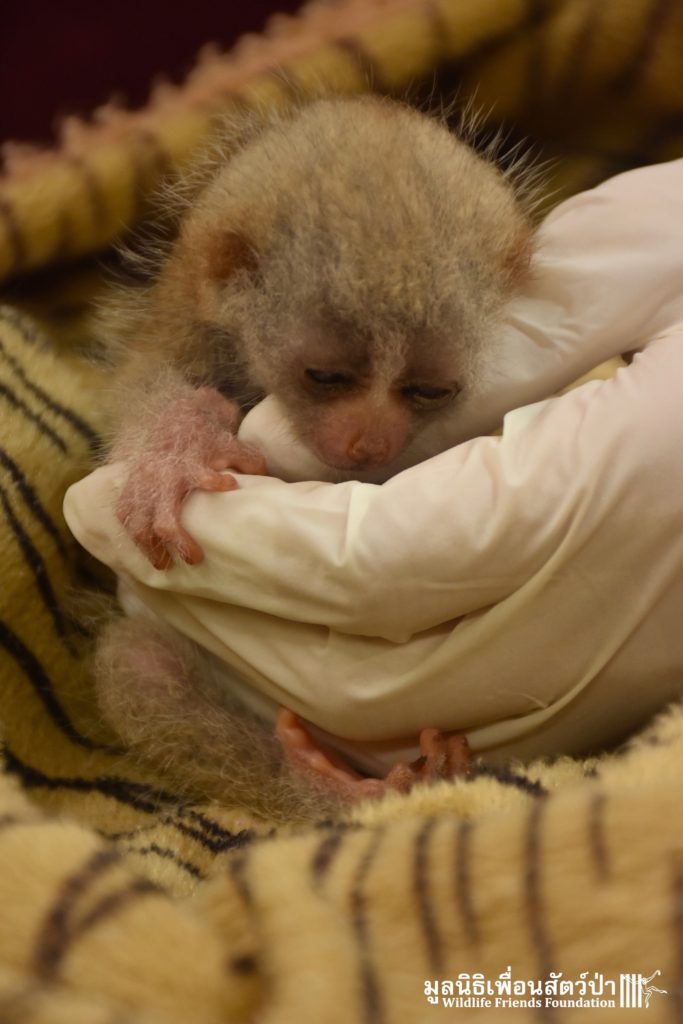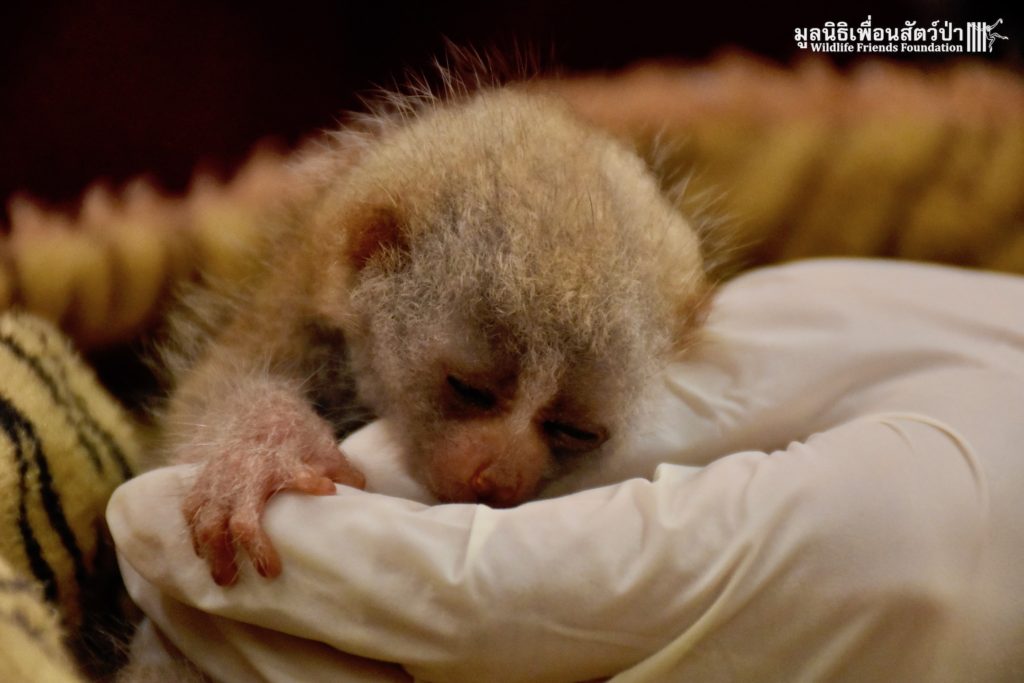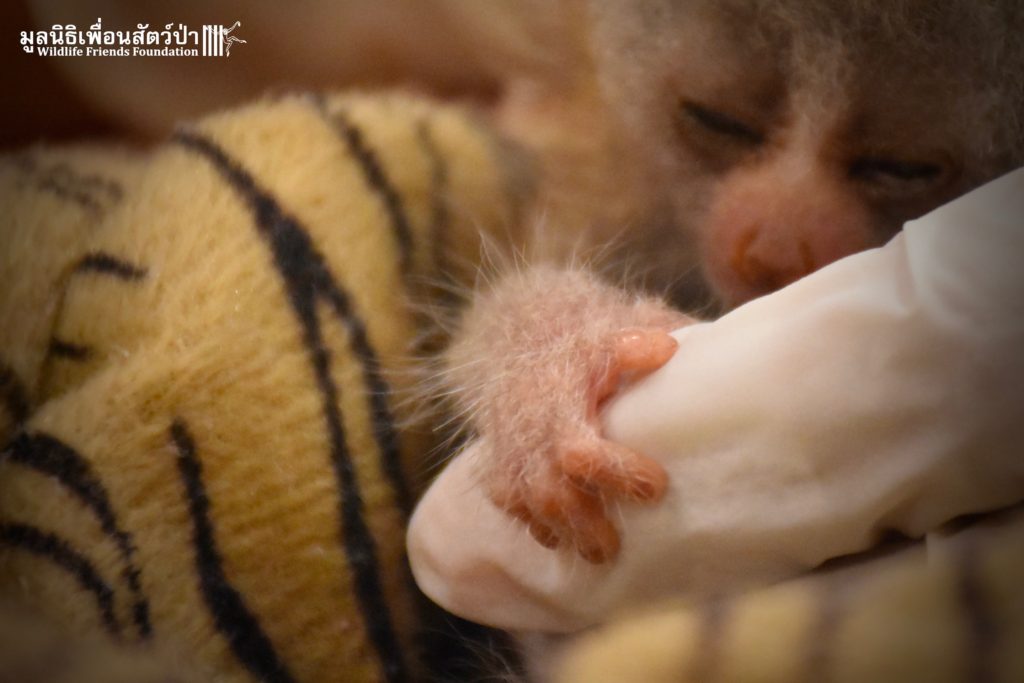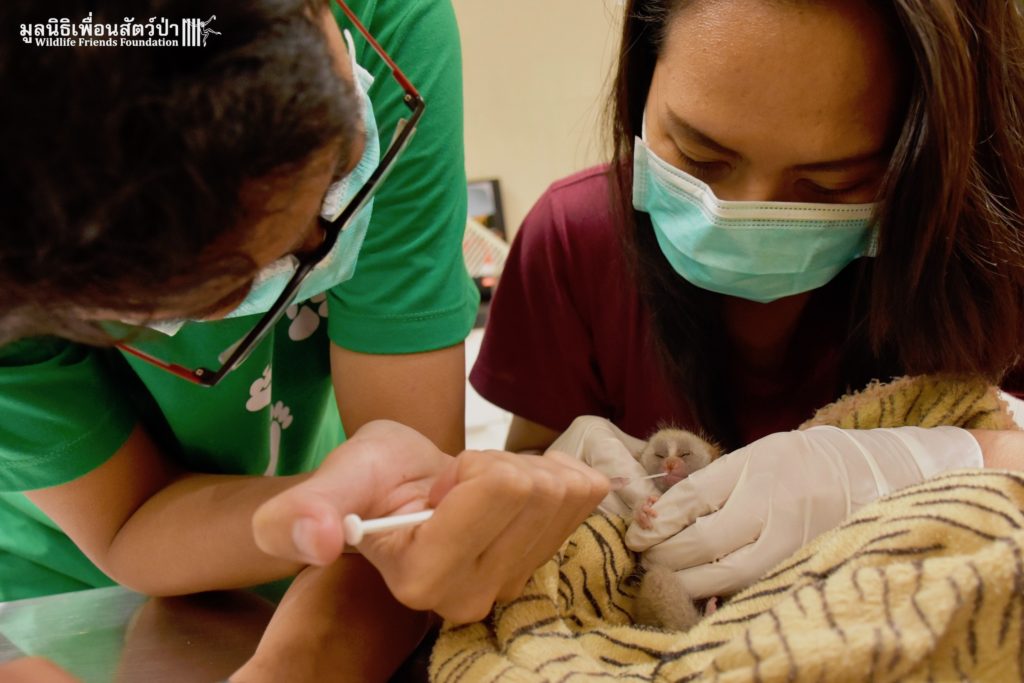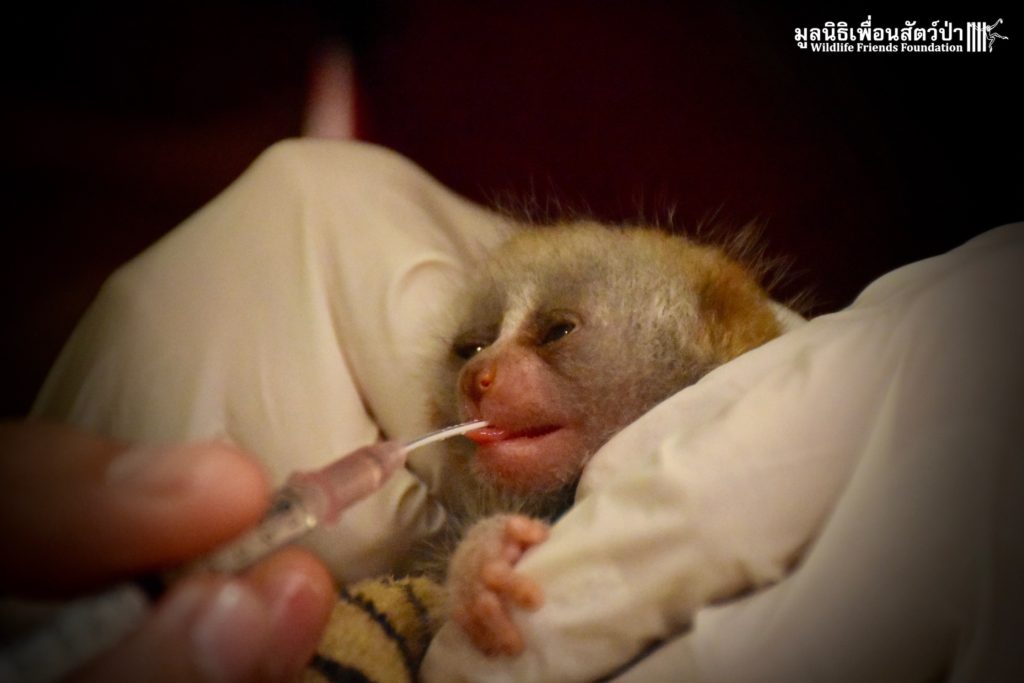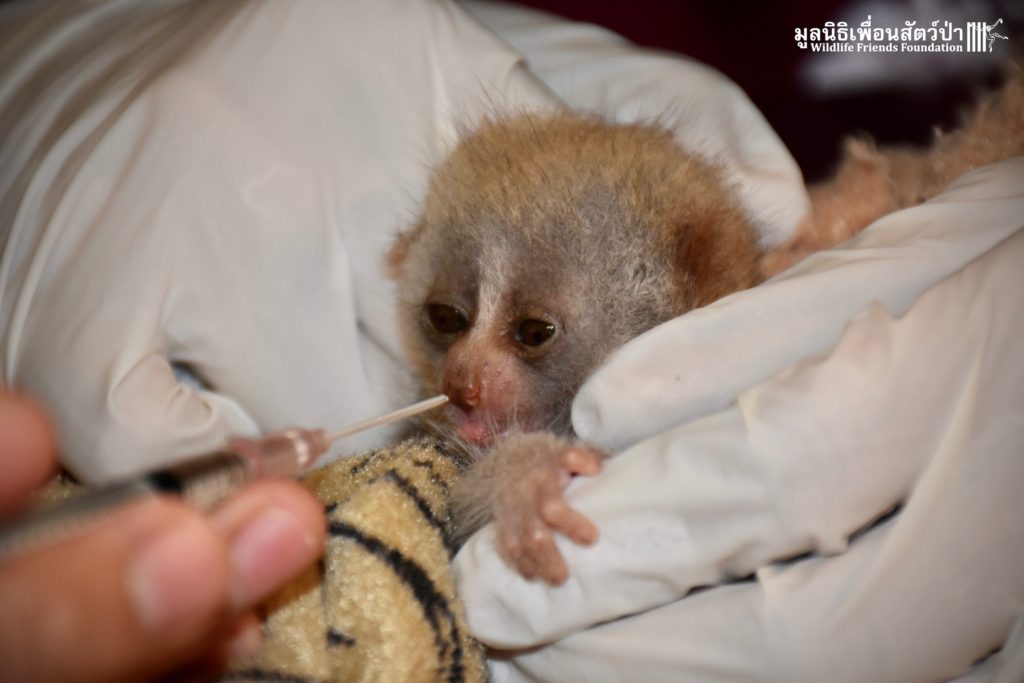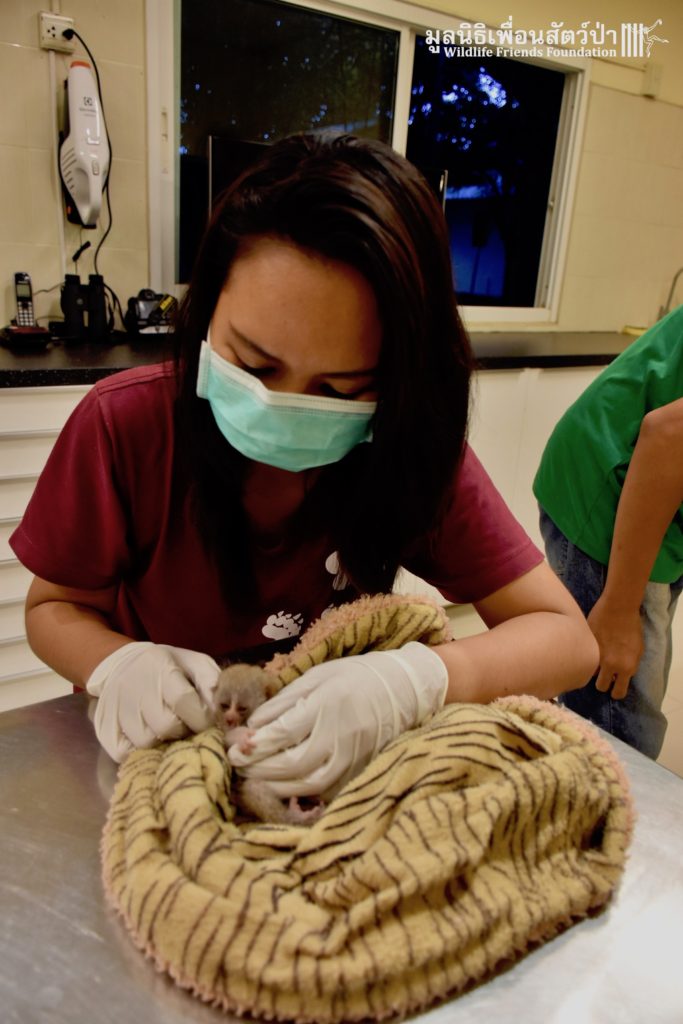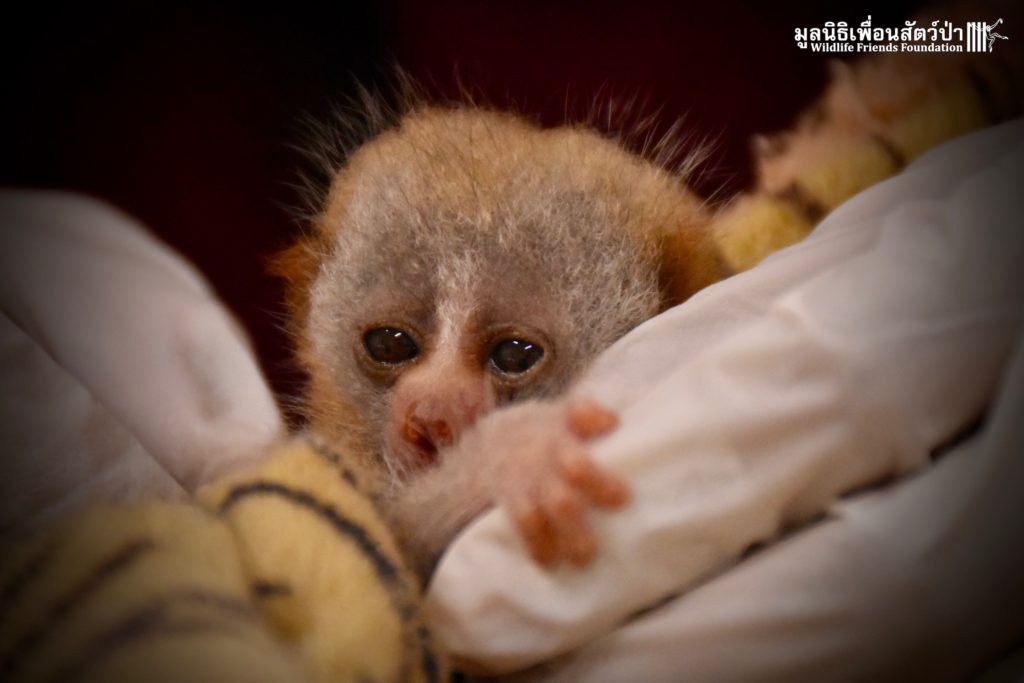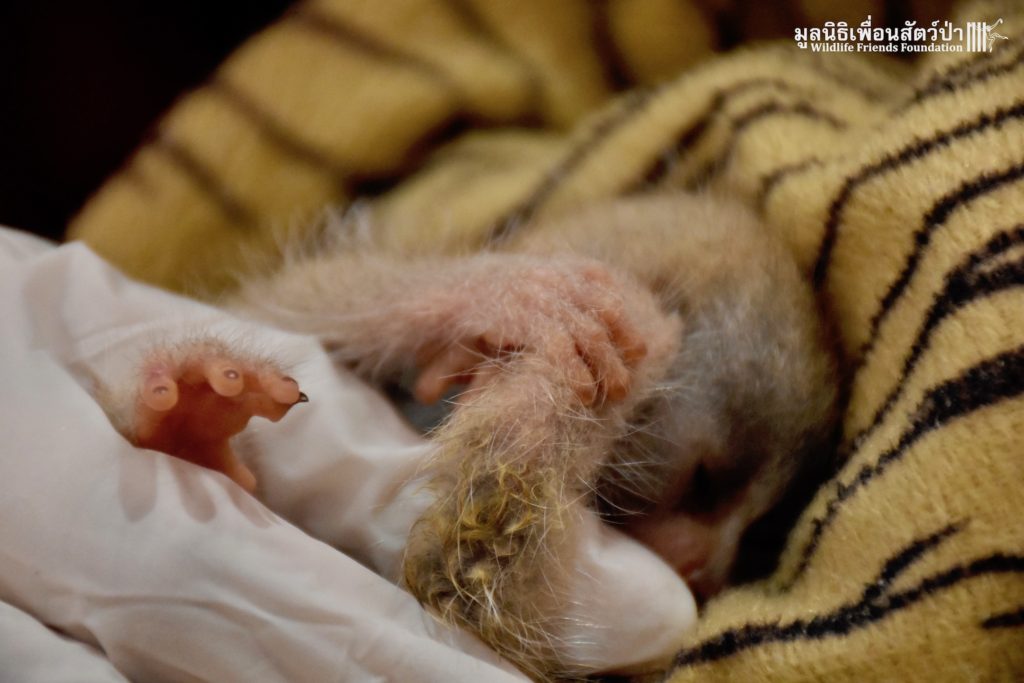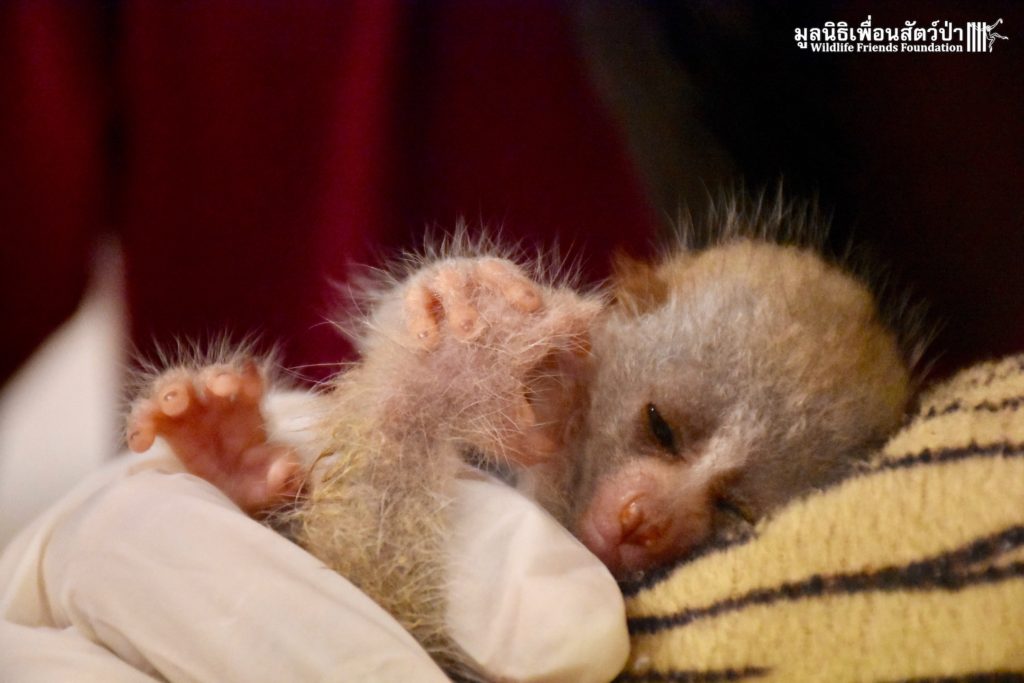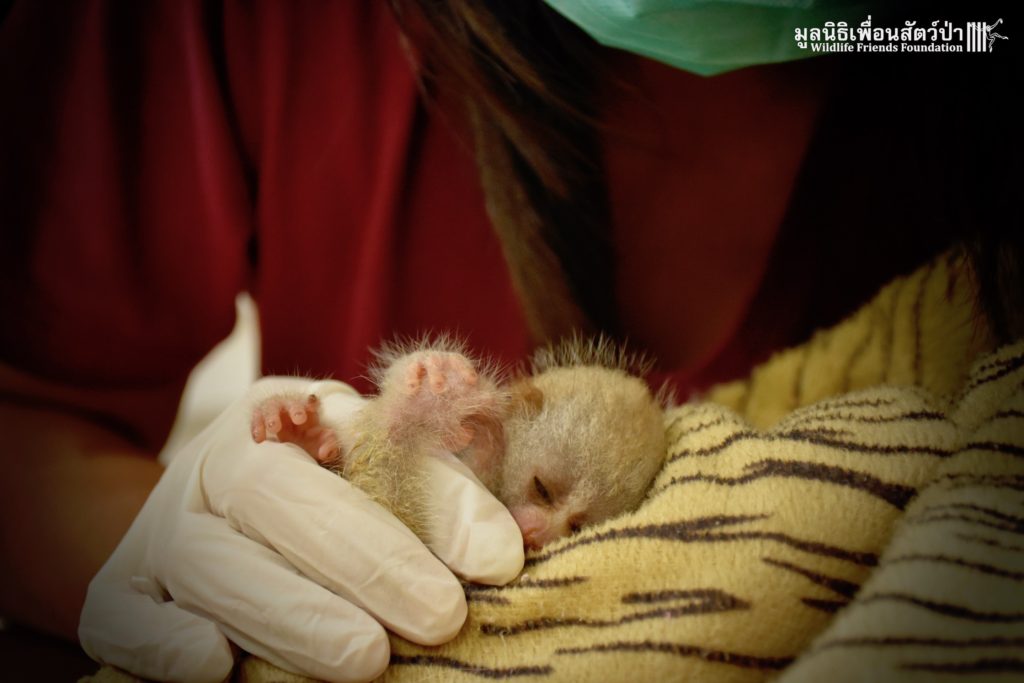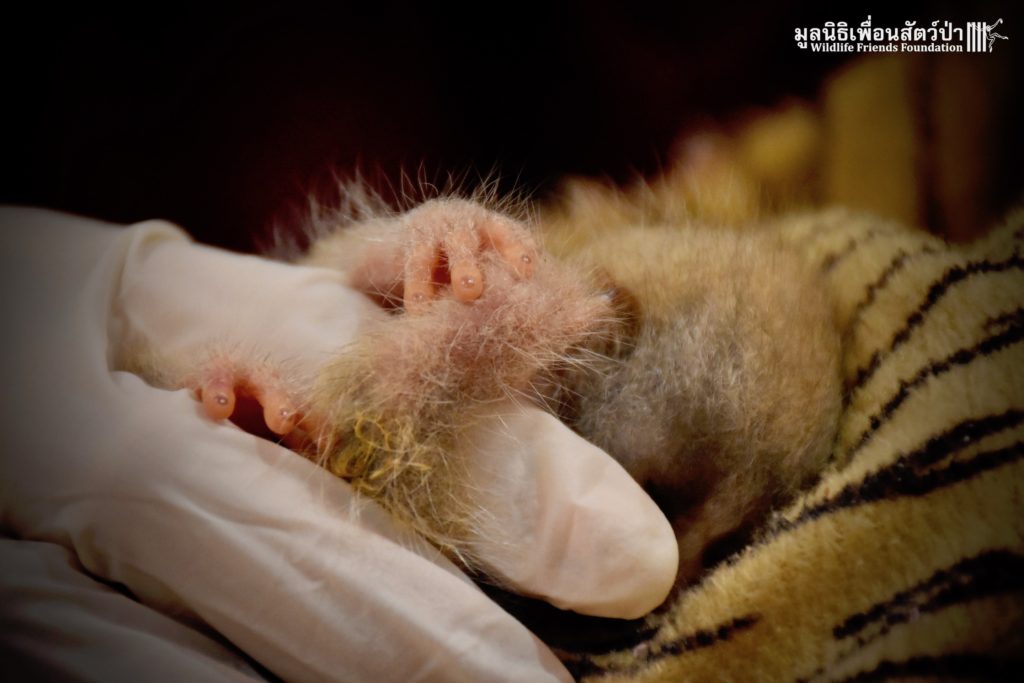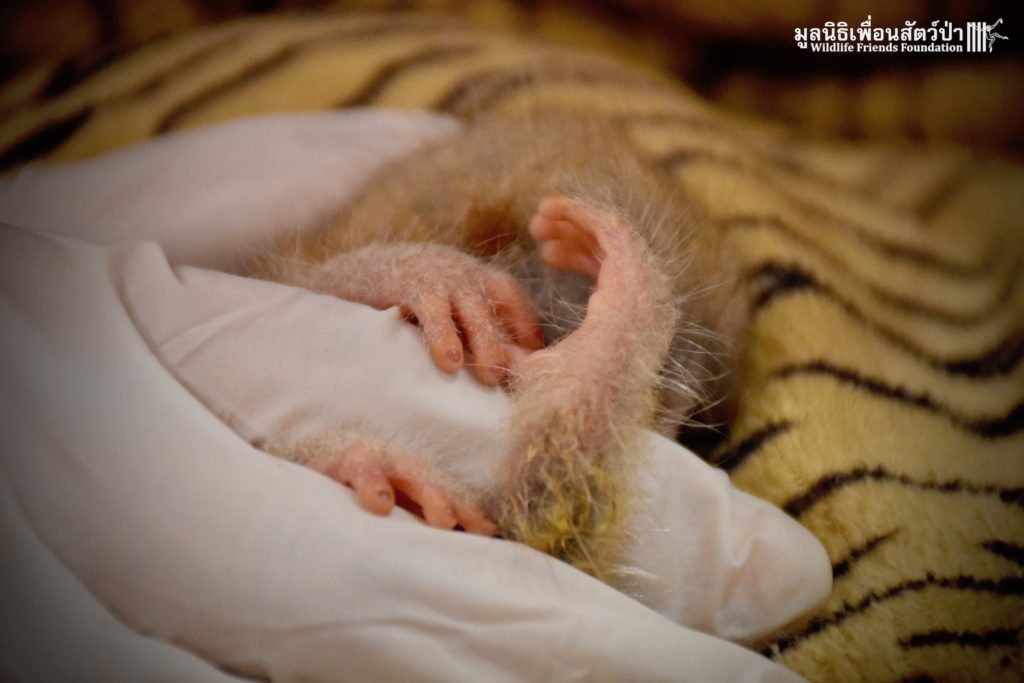Our team rescued a wild long-tailed macaque who had been struck by a car. He has severe injuries but our vets are doing everything possible
Froggy the Baby Slow Loris
Meet little Froggy the infant Bengal slow loris (Nycticebus bengalis) who brought into the WFFT Wildlife Hospital yesterday evening. He had been found on the floor outside a temple in Phetchaburi by a monk, he was saved from being eaten by the dogs at the temple. It seems he had fallen out of a tree, we do not know why this happened. Upon arrival to WFFT little Froggy was was cold and in need of some warmth and food. He was immediately given electrolytes and fluids to build up his strength. He was under the intensive care of our head veterinarian throughout the night.
The Bengal slow loris is classified as Vulnerable (VU) on the IUCN Red List. It is listed as Vulnerable due to the drastic loss of habitat and severe pressures from hunting. The species is predicted to decline by more than 30% in the next three generations over its entire range due to continuing hunting pressures and loss of habitat. This species is protected here in Thailand under the Wildlife Protection of 1992.
The most severe threats facing the species are the wildlife trade, trapping for exotic pets and use in traditional medicine, and deforestation. Hunting has been found to be most severe when near to heavily populated urban areas. The species is commonly sold as a pet and to zoos throughout Southeast Asia. Severe degradation and loss of suitable habitat is occurring at an alarming rate throughout its range.
The Bengal slow loris is used in traditional medicine in all of it’s Southeast Asian range states. It is predominantly used to prepare treatments for women after childbirth, stomach problems, healing wounds and broken bones, and in the treatment of sexually transmitted diseases. Primary users are wealthy to middle-class women in urban areas.
There are few mammals that produce toxins, but the Bengal slow loris, like other lorises, has a gland on the inside of its arm that does produce a toxin that it rubs on its face, neck, and tooth-comb. The substance provides information about the animal to other of its species and also can produce painful bite wounds in humans and other wild counterparts. The poison is also used to stake claim to home territories.
24 hours on and little Froggy seems strong and is eating well. We estimate that he is barely a few days’ old so would still be with his mother 24 hours a day. The next few days will be very telling with the survival of this little one. Please send us some positive thoughts for little Froggie.

